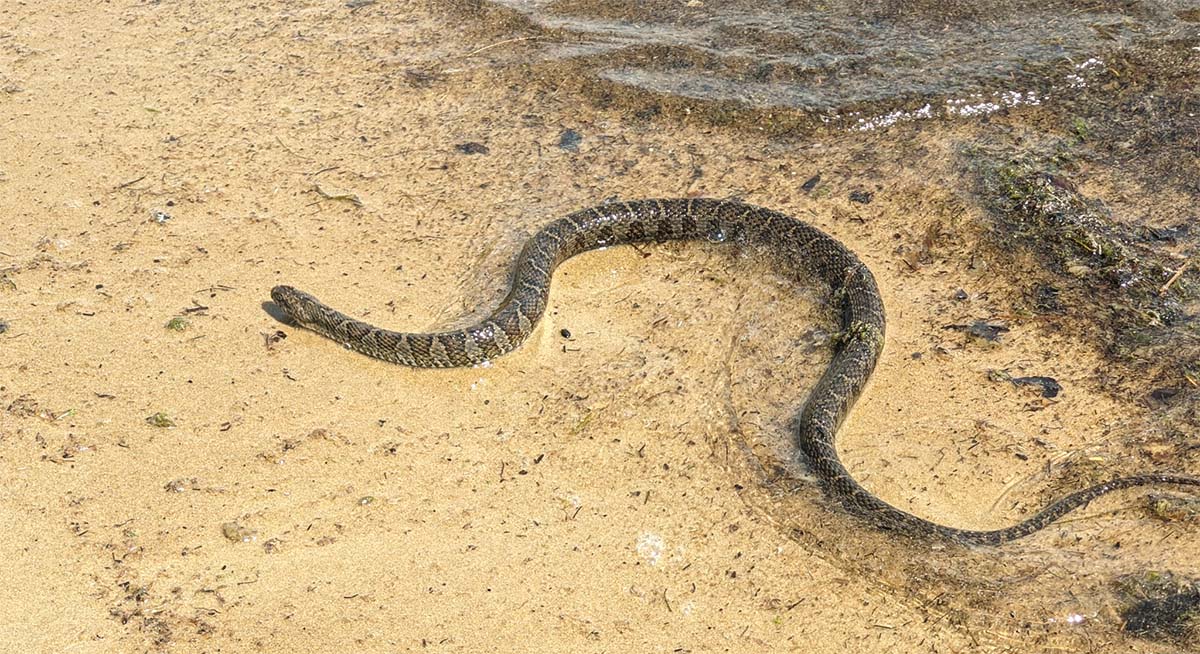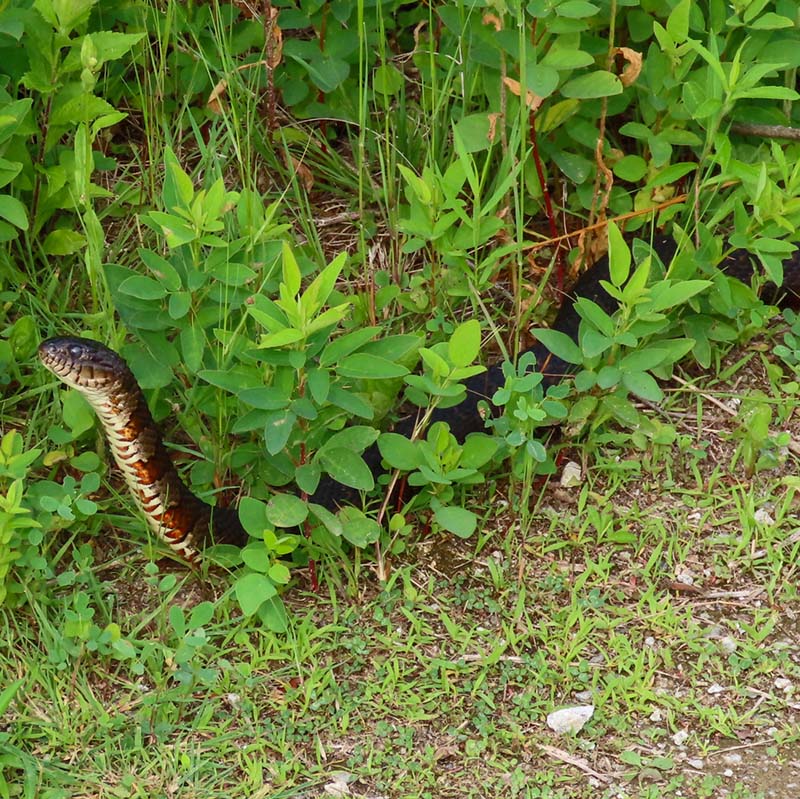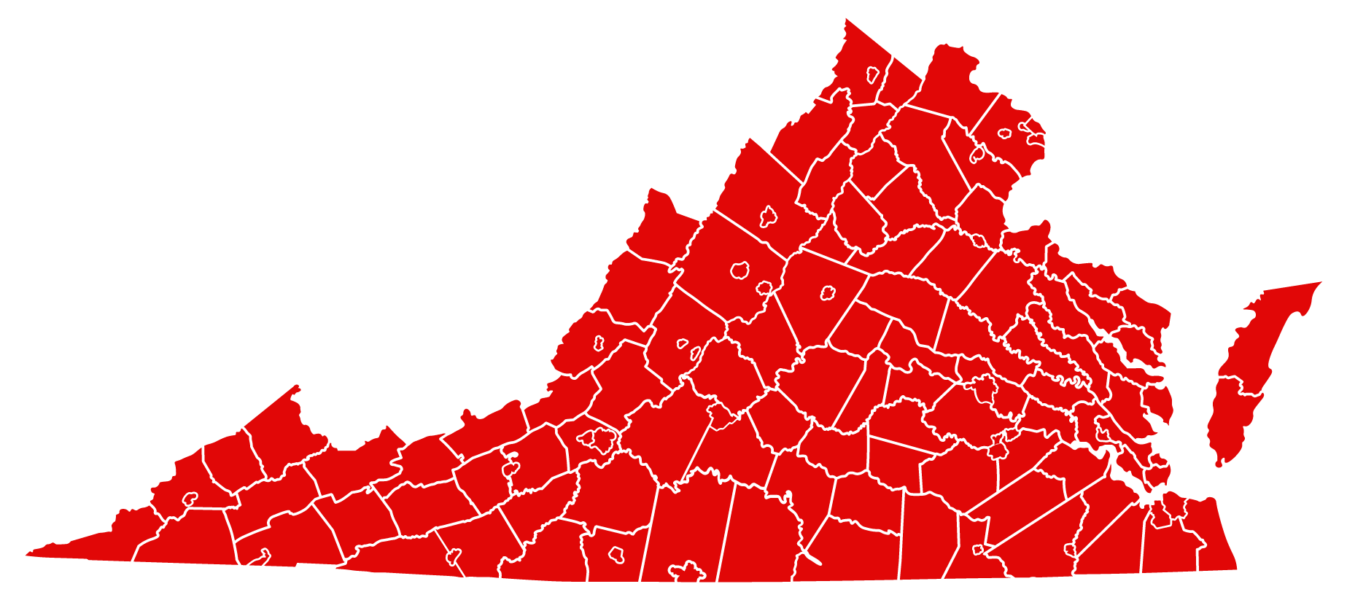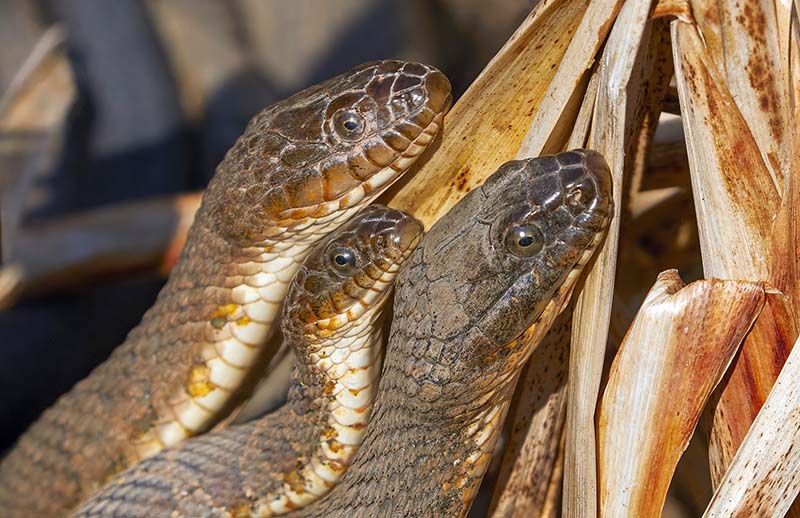
- Scientific Name
- Nerodia sipedon sipedon
- Range
- All of Virginia
- Also Known As
- Banded Watersnake, Dryland Moccasin
- Venomous
- No
- Features
- Distinct Brown Blotches
- Prey
- Fish and Amphibians
- Litter Size
- ~18 Eggs per Birth
- Life Span
- 9 Years Captivity. Unknown in Wild
- Length
- 24 - 42 Inches
Quick Links for Northern Watersnake
Northern Watersnake Description
Northern Watersnake Appearance
This snake has a series of dark crossbands which ends at mid-body or at the sides. Their main body color can be brown to gray, with varying amounts of red, yellow, or white. Their chin is always white.
Their blotches on their back, will have dark borders, but the shape and variation can vary based on geography. These blotches are harder to spot when the snake is dry.
Their belly will usually have dark half-moon markings on them
Size
This snake is usually between 24 to 42 inches long, however, the record length for this snake is about 55 inches. The record found in Virginia is 54 inches.
Juveniles tend to be 8 inches long.
Northern Watersnake Behavior
These snakes are an aggressive species. While they will not chase your, they will bite if handled. If you are bitten, make sure to wash the wound with soap and water to prevent infection. If they sense danger they will often retreat into the water.
It is illegal in Virginia to keep Wild Snakes as pets
Range and Habitat of The Northern Watersnake
Range
They can be found all over Virginia. These snakes can be found as far north as Canada and as far west as Colorado. There has been some reports that some are found in California as an invasive species.
Habitat
Anywhere there is natural water this snake will be there. They inhabits streams, lakes, ponds, and wetlands. Juveniles tend to be found in smaller streams to avoid predators.
Diet of Northern Watersnake
Their diet consists of small fish, frogs, worms, leeches, crayfish, birds, and mammals
Reproduction and Young
Reproduction
Mating season for these snakes is between April and June, However, these times may be later due to Virginia being their northern border.



